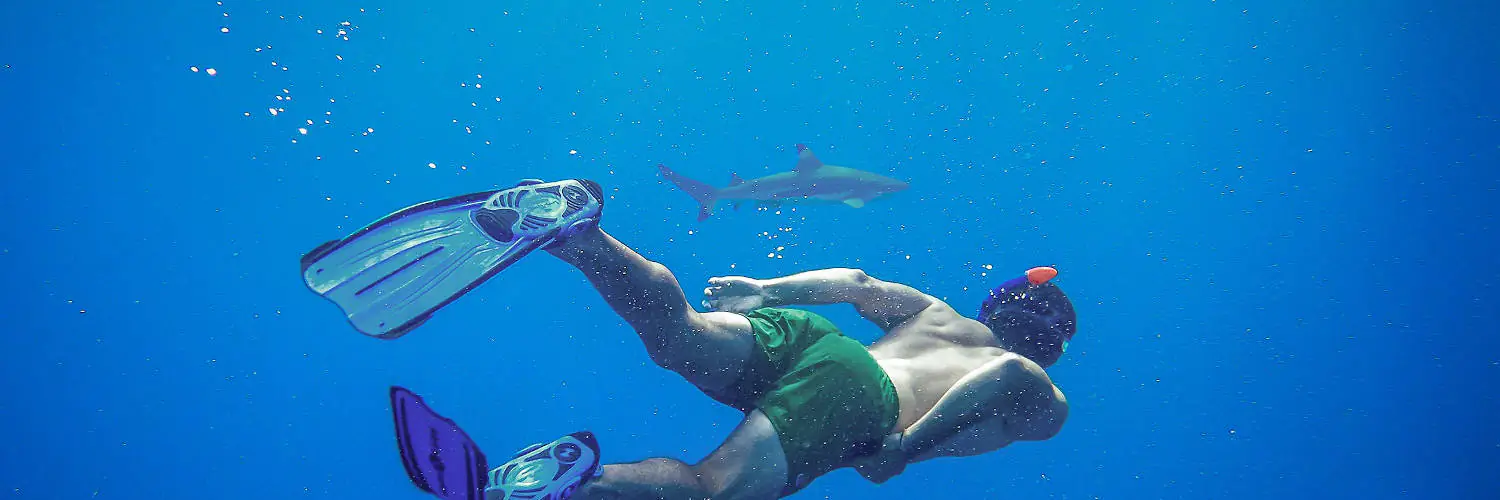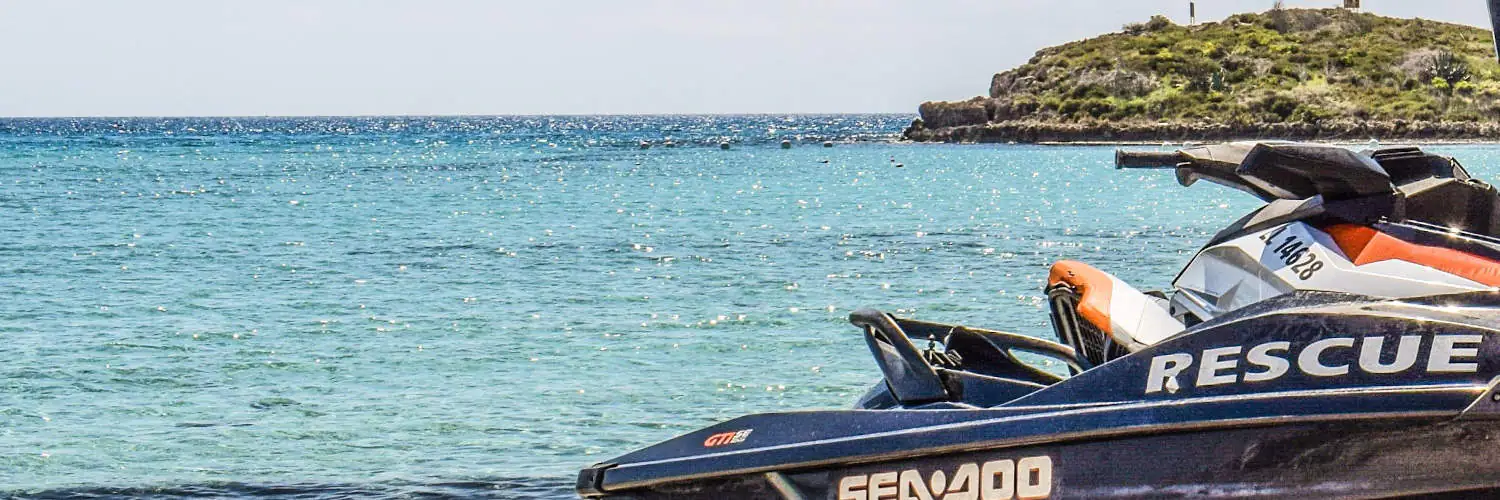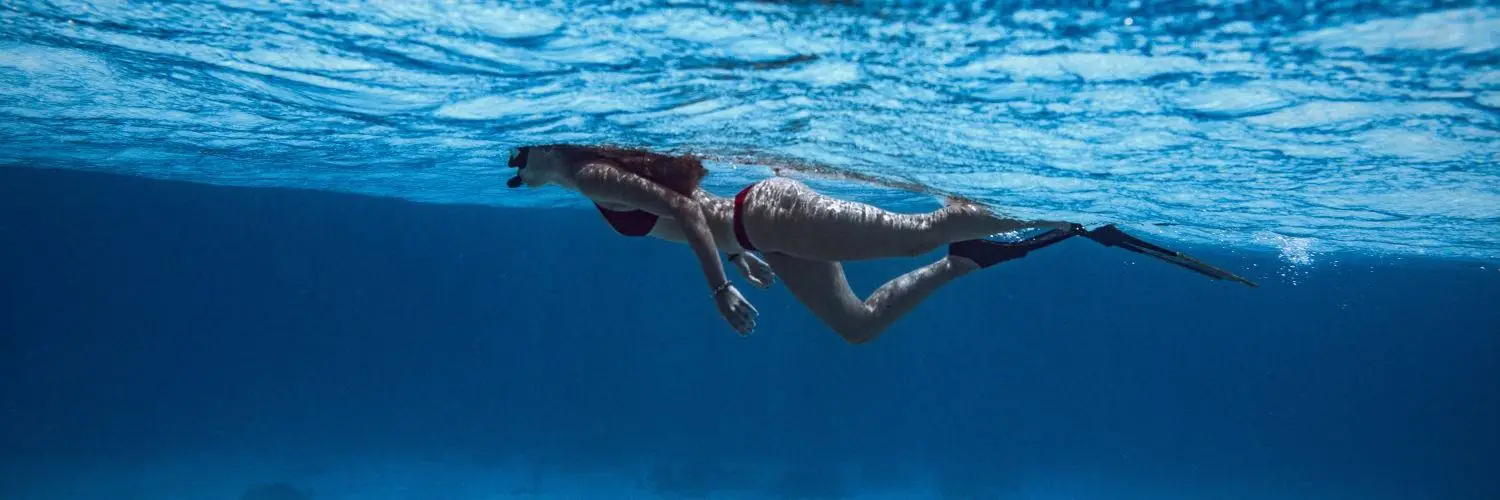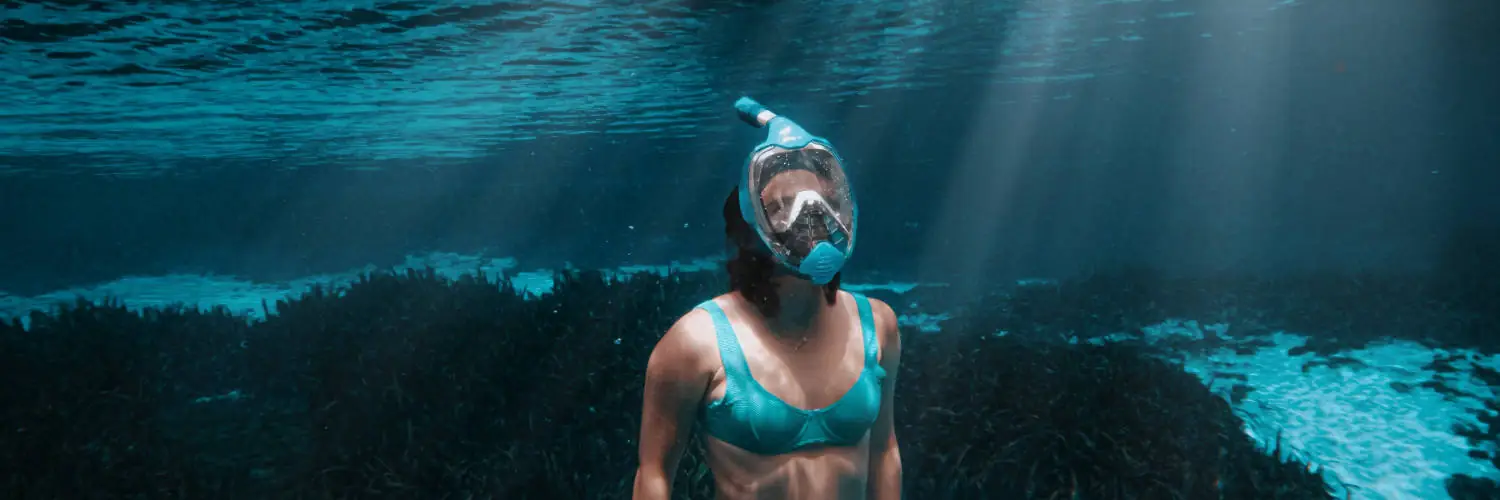Table of Contents
Snorkeling First Time Tips: A Beginner’s Guide to Underwater Adventure
Snorkeling unveils a mesmerizing underwater world, teeming with vibrant marine life and breathtaking landscapes. For the uninitiated, it offers an accessible way to witness the aquatic wonders without the extensive training and equipment associated with scuba diving. It is essential, however, to approach this activity with a certain level of preparedness and respect for the ocean environment.
Individuals embarking on their snorkeling journey should focus on building confidence in the water by improving their swimming skills and familiarizing themselves with their snorkeling gear in a controlled environment, like a swimming pool. Mastering the basics of mask clearing, proper fin techniques, and controlled breathing contributes to a more enjoyable experience. Confidence while snorkeling comes from understanding the equipment, knowing one’s abilities, and being aware of the surroundings.
Snorkelers should always prioritize safety by choosing calm and safe snorkeling spots, particularly for their initial excursions. They should learn to assess water conditions and be mindful of physical exertion to prevent fatigue. Safety measures such as snorkeling with a buddy and informing someone onshore of their plans are crucial in ensuring a positive and secure snorkeling experience. With these preparations in place, snorkelers can indulge in the serene beauty of the sea with comfort and peace of mind.
Understanding Snorkeling Basics
Before venturing into the world of snorkeling, it’s crucial for beginners to grasp the fundamental components and skills required, such as proper use of gear and effective breathing techniques.
Introduction to Snorkel and Mask
One can’t snorkel without the proper gear, and at the core of this equipment is the snorkel and mask. Choosing the right mask is essential; it should fit snugly without being too tight, ensuring no water can seep in. The mask must offer a clear field of vision and should not fog up during use. A snorkel, on the other hand, is a tube that allows one to breathe while floating face-down on the surface of the water. It’s important that the snorkel has a comfortable mouthpiece and is of the correct length to facilitate easy breathing.
When testing a snorkel mask, they should adhere to the following steps:
- Place the mask on their face without the strap.
- Inhale slightly through their nose to create a vacuum.
- Ensure the mask stays in place without continuous inhalation.
Snorkeling Techniques and Breathing
An individual’s breathing technique while snorkeling is key to a pleasant experience. They should be able to breathe calmly and deeply through the snorkel. Practicing this in a controlled environment, such as a swimming pool, can significantly help to boost one’s confidence and competence before heading into the ocean.
Here are some tips to refine snorkeling techniques:
- Take slow, measured breaths to avoid water from entering the snorkel.
- Clear the snorkel of water by exhaling forcefully if needed.
- Maintain a relaxed state to conserve energy and air.
Swimming skills also play a role in successful snorkeling; the better one swims, the more enjoyable and safer their snorkeling experience will be. They should practice moving smoothly and calmly in the water, using gentle leg movements while keeping the arms by their side to minimize fatigue.
This basic understanding of snorkeling gear and techniques lays the foundation for a memorable underwater adventure, where safety and comfort are the top priorities.
Safety and Comfort
When embarking on a snorkeling adventure, safety and comfort are of paramount importance. The right equipment is essential for a secure and enjoyable experience, while understanding and managing potential risks helps to ensure a trouble-free outing.
Selecting the Right Equipment
Fit: A snug, leak-free fit for a snorkeling mask is crucial. The mask should seal around the face without being too tight. For fins, one should aim for a firm fit without causing cramps or discomfort.
Snorkeling Gear:
- Mask: Opt for a silicone skirt for better comfort.
- Snorkel: A dry or semi-dry snorkel helps prevent water intake.
- Fins: Ensure they are the right size for efficient movement without strain.
- Life Jacket: A snorkeling vest or life jacket can provide buoyancy and peace of mind.
Recognizing and Managing Risks
Currents: Individuals should be aware of local water currents and how to react if caught in one. Swimming parallel to the shore can often bring a snorkeler back to calmer waters.
Marine Life: Avoid touching marine life to protect both the environment and oneself from potential stings or bites.
Safety Precautions:
- Always snorkel with a buddy.
- Check and understand local weather and water conditions.
- Keep a safe distance from boats and jet skis.
- Be aware of one’s physical limitations and avoid overexertion.
By meticulously selecting equipment for both safety and comfort and by recognizing and managing the inherent risks of the marine environment, snorkelers can greatly enhance their underwater experience.
Preparing for Your Adventure
Before diving into your snorkeling adventure, it’s essential to ensure you are physically prepared and aware of the environment you’ll be exploring. Suitable training and knowledge equip you for a more enjoyable and safe experience.
Physical Readiness and Swimming Proficiency
Ensuring physical readiness includes becoming comfortable with swimming, especially in the open water. Non-swimmers should consider swimming lessons to at least learn the basics of freestyle and treading water. Swimming with fins also requires practice; it is a different experience than swimming without them. Use a swimming pool for initial practice to build up stamina and confidence before transitioning into open waters like Florida or Hawaii, known for their snorkeling spots.
Environmental Awareness
Research the snorkeling location to understand currents, weather patterns, and the types of marine life you might encounter. Be aware of the presence of animals like sharks, and know how to behave responsibly around them. Wearing a rash guard can provide sun protection and help prevent abrasions from the environment. Always check the weather forecast beforehand and look for calm conditions ideal for snorkeling. Remember, the goal is to respect and preserve the aquatic environment you are visiting.
Exploring the Underwater World
Embarking on a snorkeling adventure promises a wondrous glimpse into the intricate ecosystems beneath the ocean’s surface. The underwater realm teems with vibrant marine life and offers extraordinary views that can only be appreciated up close.
Choosing the Ideal Location
Indonesia and The Maldives rank among the top destinations for first-time snorkelers due to their clear waters and abundant marine life. When selecting a spot, one must consider:
- Ocean conditions: Calm, clear waters are preferable for beginners to optimize visibility and safety.
- Coral reefs: Look for locations with healthy reefs, which are hotspots for diverse wildlife.
- Interesting spots: Areas with underwater canyons or shipwrecks offer unique environments to explore.
| Destination | Visibility | Marine Life | Highlights |
|---|---|---|---|
| Indonesia | Excellent | High diversity | Extensive coral reefs |
| Maldives | Good | Whale sharks | Gentle giants sighting |
Interacting with Marine Wildlife
Snorkeling allows swimmers to observe creatures like fish, turtles, and even whale sharks. However, it’s crucial to practice reef etiquette to minimize impact on the environment:
- Do not touch or chase wildlife; observe from a safe and respectful distance.
- Avoid feeding fish, as it disrupts natural behaviors and diet.
By adhering to these guidelines, snorkelers ensure that their presence supports the preservation of delicate underwater ecosystems, making each snorkeling experience enjoyable and sustainable.
Enhancing Your Snorkeling Experience
To turn a good snorkeling adventure into a great one, it’s crucial to invest in advanced snorkeling gear and to capture the awe-inspiring underwater scenes through photography.
Advanced Snorkeling Gear
The right equipment can drastically improve the comfort and quality of a snorkeler’s experience. For a first-timer, a well-fitting wetsuit is essential for maintaining body warmth in various water temperatures and providing a layer of protection against the sun and potential scrapes. Snorkel fins should not be overlooked as they are pivotal for efficient swimming, giving the snorkeler better control and reducing fatigue.
Buoyancy is another vital concern for snorkelers. A snorkeler might opt for a buoyancy control device (BCD) to help manage their floating capabilities effortlessly, which is especially beneficial for beginners who are still getting acquainted with the water environment. Here’s what to focus on when selecting gear:
- Wetsuit: Choose based on water temperature and fit.
- Snorkel Fins: Make sure they’re the right size and comfortable for longer use.
- Buoyancy: Consider a flotation belt or vest for added safety and control.
Capturing Memories with Underwater Photography
Underwater photography allows snorkelers to preserve the vivid imagery of marine life. First-timers should consider a user-friendly underwater camera or a GoPro. These devices are designed to withstand water pressure and have features tailored for underwater use.
A beginner may start with a basic camera and gradually move to more sophisticated models as they become more proficient in snorkeling and underwater photography. Key points for cameras include:
- Ease of Use: Choose cameras with simple controls.
- Durability: Ensure the camera is rated for the depths you’ll explore.
- Quality: Look for good resolution and color balance to capture vibrant photos.
- Extras: Consider cameras with WiFi for easy sharing and GPS for location tagging.
List of Recommended Underwater Camera Features:
- High-resolution video capability
- Sturdy, waterproof housing
- Wide-angle lens
- Image stabilization
- Easy-to-press buttons, even with gloves on
By focusing on the right gear and capturing the experience with a camera suited for underwater conditions, snorkelers can make their first expedition both memorable and captivating.
Environmental Responsibility and Conservation
When embarking on a snorkeling adventure, especially for those new to the activity, it is crucial to recognize the significant impact humans can have on marine environments. Adopting a conscientious approach towards the environments explored, especially coral reefs, ensures their preservation for future generations.
Practising Reef-Safe Activities
Reef-safe snorkeling is essential in minimizing human impact on marine ecosystems. Visitors should be diligent in using reef-safe sunscreen to protect marine life from harmful chemicals. Sunscreens without oxybenzone and octinoxate are recommended, as these substances can cause coral bleaching.
- Equipment: Ensure masks and snorkels fit properly to avoid disturbances or damage to coral.
- Contact: Refrain from touching or standing on the coral reefs, as they are living organisms and highly susceptible to human contact.
- Wildlife: Observe marine animals from a distance; feeding or touching them can disrupt their natural behaviors.
Supporting Local Conservation Efforts
Participation in local conservation initiatives is a powerful way for snorkelers to contribute positively during their visits. Places such as the Caribbean and the Maldives are renowned for their diverse marine life and efforts to preserve their underwater habitats.
- Education: Take part in educational programs to learn about marine conservation.
- Tour Operators: Choose operators committed to environmental sustainability.
- Contributions: When possible, donate to conservation projects or volunteer for local environmental groups.
By adhering to these practices, snorkelers help protect the regions they visit and ensure the longevity and health of vital ecosystems.








